Are you tired of paying high energy bills every month? Your HVAC system may be the culprit. With a few simple tips, you can save money on your utility bills and keep your home comfortable all year round.
Your HVAC system is one of the biggest energy consumers in your home. In fact, heating and cooling systems account for about 48% of the energy use in a typical U.S. home. That’s why it’s essential to find ways to reduce your energy usage without sacrificing comfort.
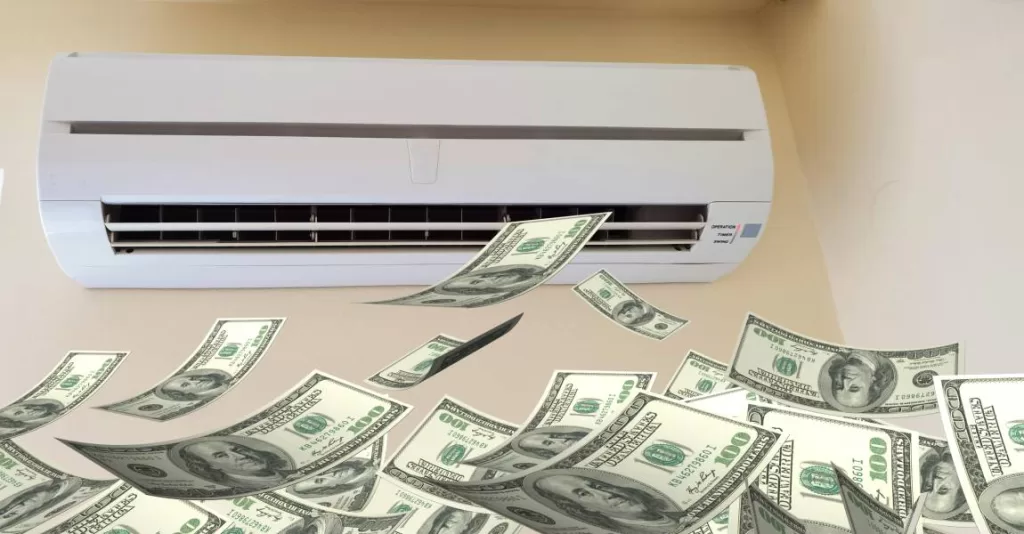
In this blog post, we’ll share some simple tips to help you save money on your HVAC energy bills. These tips will help you reduce your energy usage and lower your monthly bills, from upgrading your thermostat and cleaning dirty filters to sealing air leaks.
- What is HVAC?
- Benefits of Saving on HVAC Energy Bills
- What is a Smart Thermostat?
- How to Install a Smart Thermostat
- Air Conditioners and Filters
- Ways to Reduce Energy Usage and Save Money
- Air Conditioning Tips for Keeping Cool in the Summer Months
- Schedule Annual Maintenance for your HVAC System
- Consider Replacing your Outdated AC Unit
- Conclusion
What is HVAC?
HVAC stands for Heating, Ventilation, and Air Conditioning. It refers to the system that regulates indoor air temperature, humidity, and air quality in buildings, homes, and other enclosed spaces.
HVAC systems are designed to provide comfortable and healthy indoor living and working conditions by controlling the temperature and humidity of the air and removing pollutants.
HVAC systems typically include a furnace or heating unit, air conditioning unit, air ducts, vents, and filters. They can be found in residential homes, commercial buildings, and industrial facilities.
Benefits of Saving on HVAC Energy Bills
Saving on HVAC (Heating, Ventilation, and Air Conditioning) energy bills can benefit individuals and businesses. HVAC systems are responsible for a significant portion of energy consumption in homes and buildings, and reducing energy usage can result in cost savings, improved comfort, and a reduced carbon footprint.
One of the primary benefits of saving on HVAC cooling bills is cost savings. Individuals and businesses can save money on their cooling bills by reducing energy consumption. This can be achieved through various methods, such as upgrading to more energy-efficient equipment, improving insulation, and adjusting temperature settings. Some short bullet points to consider are:
- Energy-efficient HVAC equipment can reduce energy consumption by up to 50%
- Properly sealing and insulating air ducts can save up to 20% on air conditioning bills
- Adjusting the thermostat by just 1 degree can result in a 1% reduction in energy usage.
In addition to cost savings, saving on HVAC electricity bills can improve comfort levels. Individuals and businesses can enjoy more consistent temperatures and better humidity control by upgrading to more energy-efficient equipment. Improved insulation can also help to reduce drafts and cold spots, resulting in a more comfortable indoor environment.
Some Key Takeaways to consider are:
- Energy-efficient HVAC equipment can provide more consistent temperatures and improve humidity control
- Properly sealed and insulated air ducts can reduce drafts and cold spots
- Adjusting temperature settings can improve comfort levels without sacrificing energy savings
Finally, saving on HVAC electric bills can also positively impact the environment. By reducing energy consumption, individuals and businesses can help to reduce greenhouse gas emissions and their carbon footprint. This can be achieved through various methods, such as upgrading to more energy-efficient equipment, using renewable energy sources, and reducing overall energy usage. Some short bullet points to consider are:
- Energy-efficient HVAC equipment can reduce greenhouse gas emissions by up to 30%
- Renewable energy sources such as solar or wind power can reduce carbon emissions.
- Reducing overall energy usage can positively impact the environment and help mitigate the effects of climate change.
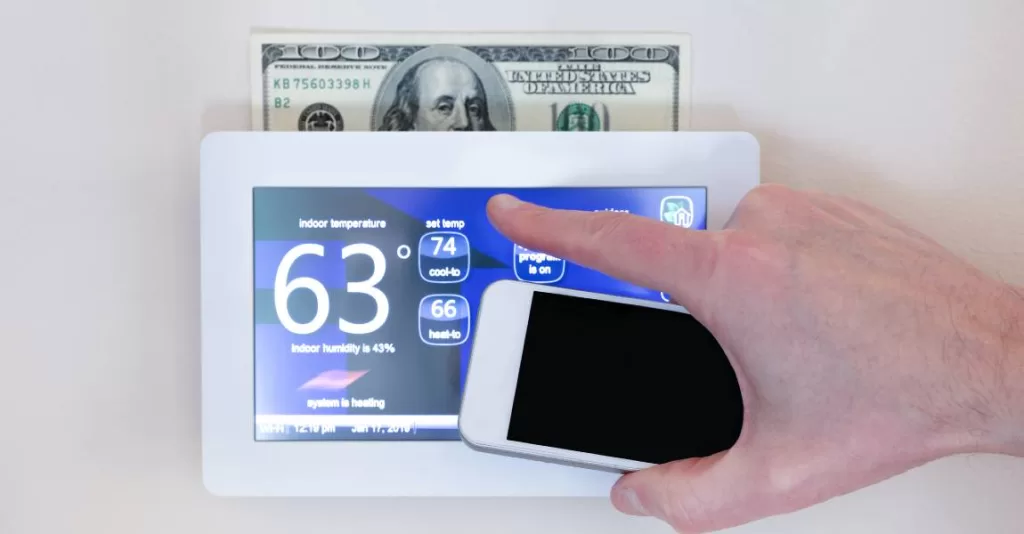
What is a Smart Thermostat?
A smart thermostat is an advanced thermostat that uses sensors and algorithms to learn your temperature preferences and adjust the temperature accordingly. It can be controlled remotely via a smartphone app or voice commands, allowing you to adjust the temperature anywhere.
Smart thermostats also have features such as geofencing, which detects when you are away from home and adjusts the temperature accordingly, saving energy and money on your utility bills.
Some smart thermostats also have additional features like air quality monitoring, humidity control, and integration with other smart home devices. They can also provide energy usage reports, allowing you to see how much energy you are using and where you can make adjustments to save even more money.
Overall, a smart thermostat is an innovative and convenient way to control and optimize the temperature in your home while also saving money and energy.
Benefits of Installing a Smart Thermostat
Smart thermostats have become increasingly popular due to their numerous benefits. One of the most significant advantages of installing a smart thermostat is its programmable feature, allowing you to set a schedule and desired indoor temperature. This feature ensures that your home is always at a comfortable temperature, whether you are at home or away.
The smart devices can also adjust the temperature based on outdoor temperature, ensuring that your home remains comfortable during hot summer and chilly winter months.
Another significant benefit of a smart thermostat is increased energy efficiency. These thermostats can learn your daily routine and adjust the thermostat temperature accordingly, saving energy and reducing energy usage.
Additionally, a smart thermostat can provide energy-saving tips and insights into your energy usage, allowing you to make informed decisions about your energy consumption.
Smart Thermostat Pros and Cons
However, there are also pros and cons to consider when installing a smart thermostat.
On the positive side, a smart programmable thermostat can save you money on your energy bills and improve your overall comfort level. It can also be controlled through a mobile app, allowing you to adjust the temperature remotely.
On the downside, smart thermostats can be costly, and some models may require professional installation.
Additionally, some people may not be comfortable with the idea of a device learning their daily routine and habits.
A smart thermostat is an excellent investment for your home, providing numerous benefits such as:
- energy efficiency
- comfort
- convenience
- Energy Costs
- AC Rewards Program
While there are some potential downsides to consider, the advantages of a smart thermostat far outweigh the cons.
By installing a smart thermostat, you can save money on your cooling cost and heating costs, reduce your energy usage, and enjoy a comfortable temperature all year round.
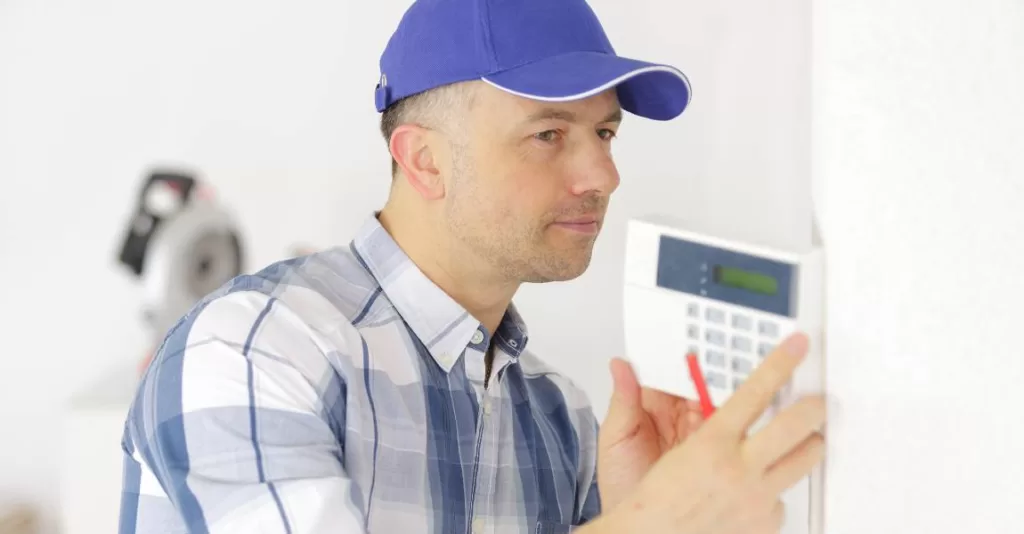
How to Install a Smart Thermostat
Installing a smart thermostat is a great way to save energy and money on your heating and cooling bills.
Here are the steps to install a smart thermostat:
1. Turn off the power supply to your HVAC system by switching off the circuit breaker or removing the fuse.
2. Remove your old thermostat from the wall by unscrewing it from the mounting plate. Be careful not to damage any wires.
3. Take a photo of the wiring configuration to reference it later. Label the wires with tape or use a wire color code chart.
4. Install the mounting plate for your new smart thermostat. Use the provided screws and anchors to attach the plate to the wall.
5. Connect the wires from your HVAC system to the new thermostat. Please follow the wiring diagram with your new thermostat, or refer to the photo or labeling you made earlier.
6. Attach the new thermostat to the mounting plate and turn on the power supply to your HVAC system.
7. Follow the manufacturer’s instructions to install your new smart thermostat. This may involve connecting it to your home’s Wi-Fi network, downloading an app, and programming your desired temperature settings.
8. Once your smart thermostat is set up, you can enjoy energy savings and convenience. You can control your thermostat remotely from your smartphone, set schedules for temperature changes, and receive alerts when your home’s temperature is outside your desired range.
It’s important to note that if you’re uncomfortable working with electrical wiring, you should hire a professional HVAC technician to install your smart thermostat. Safety first!
Air Conditioners and Filters
Air conditioners and filters are essential components of any cooling system. Here are some reasons why they are important:
1. Air conditioners help to regulate the temperature and humidity in indoor spaces, creating a more comfortable and healthy environment for occupants.
2. Filters are essential to air conditioners because they help remove pollutants, allergens, and other harmful particles, improving indoor air quality and reducing the risk of respiratory problems.
3. Regular maintenance and replacement of air filters in air conditioners are essential to ensure they function efficiently, reducing energy consumption and saving on utility bills.
4. Air conditioners with high-quality filters can also help to reduce the spread of airborne viruses and bacteria, improving overall health and safety in indoor environments.
5. The use of air filters in air conditioners can also help protect the system from damage caused by dust and debris, extending the unit’s lifespan and reducing the need for costly repairs.
6. In commercial settings, air conditioners and filters are essential for maintaining comfortable working conditions for employees and providing a pleasant environment for customers and visitors.
7. Proper installation and maintenance of air conditioners and filters are essential to ensure they operate safely and efficiently, reducing the risk of fire, electrical problems, or other hazards.
8. Air conditioners with advanced filtration systems can also help to reduce outdoor air pollution and improve overall environmental quality by removing pollutants and harmful particles from the air.
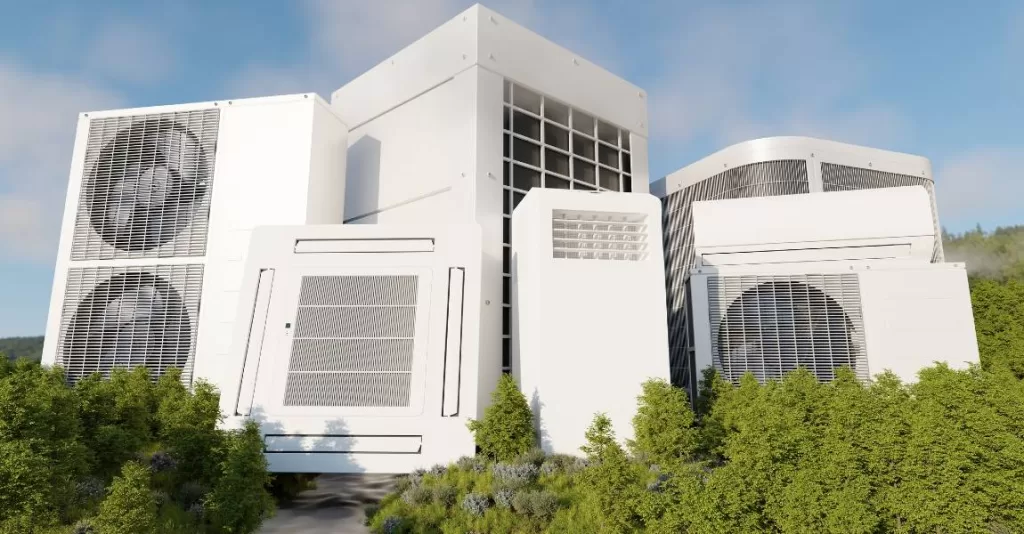
Types of Air Conditioners
- Window Air Conditioner
- Ductless Mini Split Air conditioning
- Portable Air Conditioner
- Central Air Conditioners
Air conditioners come in different types, each with its unique features and suitability for different spaces and needs.
The following are the most common types of air conditioners:
1. Window Air Conditioners: These are compact units that are installed in a window or wall opening. They are ideal for small spaces like single rooms, apartments, or small offices.
2. Portable Air Conditioners: These are standalone units that can be moved from one room to another. They come with a hose that needs to be vented outside the room to remove the warm air. Portable air conditioners are suitable for those who don’t want to install a permanent unit or for spaces where window units are not allowed.
3. Split Air Conditioners: This unit consist of two components: an indoor and outdoor unit. The indoor unit is mounted on a wall or ceiling, while the outdoor unit is installed outside the room. Split air conditioners are ideal for larger spaces like homes, offices.
4. Ducted Air Conditioners: Central air conditioning systems that are installed in a ceiling or under the floor. They use a network of ducts to distribute cool air throughout the building. Ducted air conditioners are suitable for larger spaces and are often used in commercial buildings or homes with multiple rooms.
5. Cassette Air Conditioners: Similar to ducted air conditioners, but the indoor unit is installed in the ceiling. They are ideal for spaces with limited wall or floor space, such as offices or shops.
6. Multi-Split Air Conditioners: These units are similar to split air conditioners but allow multiple indoor units to be connected to a single outdoor unit. They are ideal for spaces with multiple rooms, where each room requires individual temperature control.
Overall, the choice of air conditioner type depends on the size of the space, the number of rooms, and the user’s needs and preferences. When choosing an air conditioner, it is essential to consider the efficiency, noise level, and installation requirements.
Types of Air Conditioning Filters:
- Fiberglass Filters
- Pleated Filters
- Electrostatic Filters
- HEPA Filters
Air conditioning filters are essential components of air conditioning systems that help to keep the air clean and free from harmful particles. There are several types of air conditioning filters available in the market, each with its unique features and benefits.
The first type of air conditioning filter is the fiberglass filter. This is the most commonly used air conditioning filter, and it is made of layered fiberglass fibers that trap large particles like dust and dirt. However, it is ineffective at trapping smaller particles like pollen and mold spores.
The second type of air conditioning filter is the pleated filter. This filter is made of folded layers of fabric or paper and is more effective at trapping smaller particles like pollen and mold spores than the fiberglass filter. It also has a larger surface area, which means it can trap more particles before it needs to be replaced.
The third type of air conditioning filter is the electrostatic filter. This filter uses an electrostatic charge to attract and capture particles that are too small for other filters to catch. It is highly effective at trapping allergens like pollen and dust mites, but it must be cleaned regularly to maintain effectiveness.
The fourth type of air conditioning filter is the HEPA filter. This filter is the most effective at trapping small particles and is often used in hospitals and other medical settings. It can trap particles as small as 0.3 microns, which includes bacteria and viruses. However, it is also the most expensive type of filter and requires more frequent replacement.
Choose the Correct Air Filter
Choosing the right air conditioning filter depends on several factors, including the level of air pollution in the area, the presence of allergies or respiratory issues, and the type of air conditioning system being used. It is essential to consult with a professional HVAC technician to determine the best type of filter for your specific needs.
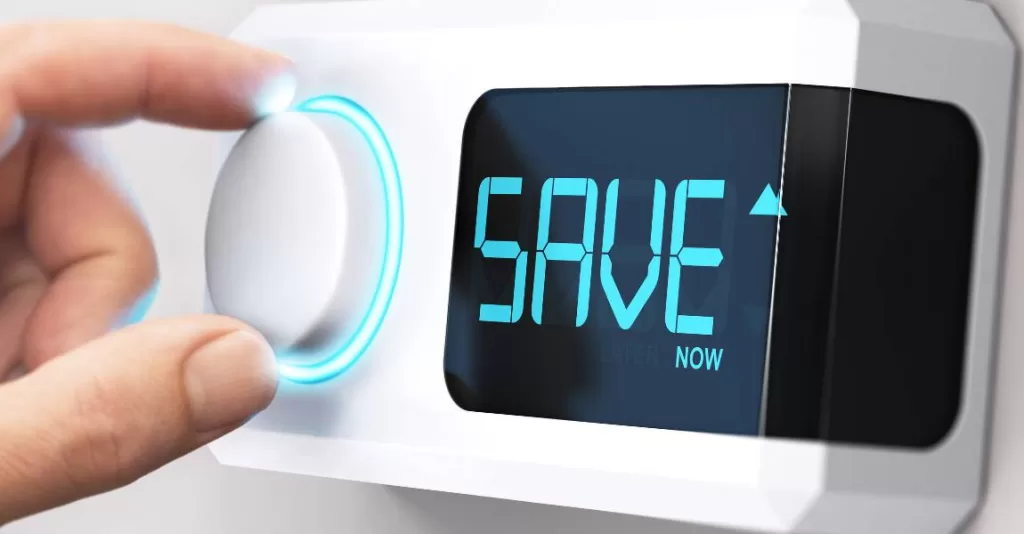
Ways to Reduce Energy Usage and Save Money
- Use a programmable thermostat to adjust temperature settings when no one is home.
- Keep the air filter clean and replace the dirty air filter regularly
- Seal any air leaks in windows and doors to prevent cool air from escaping
- Use ceiling fans to help circulate cool air throughout the room
- Close curtains or blinds during the hottest part of the day to block out direct sunlight and heat
- Schedule regular maintenance and tune-ups for your air conditioning unit to keep it running efficiently.
Learn More: Tips for Improving AC Efficiency and Reducing Energy Costs
Air Conditioning Tips for Keeping Cool in the Summer Months
- Schedule annual maintenance for your HVAC system to ensure it runs at peak efficiency.
- Schedule an energy audit of your home to identify areas where you can save energy and money
- Keep blinds and curtains closed during the hottest parts of the day to block out sunlight and heat.
- Install energy-efficient windows to reduce cooling costs
- Planting trees outside your home can help block the sun’s rays and keep your home cooler.
- Proper insulation and sealing of your home can prevent cool air from escaping and warm air from entering.
- Replace light bulbs with LED or CFL bulbs
- Avoid using heat-producing appliances such as the oven or clothes dryer during the hottest parts of the day.
- Raise the Temperature on Your Thermostat
- Ensure Your Air Ducts are Sealed
Raising the temperature on your thermostat is one of the most effective ways to save money on your air conditioning bills. You can reduce your cooling costs significantly by setting your thermostat a few degrees warmer. The Department of Energy recommends setting your thermostat between 74 and 78 degrees Fahrenheit for optimal energy efficiency.
Incandescent bulbs generate more heat than other bulbs, so replace them with LED or CFL bulbs to reduce the heat in your home.
It is important to ensure your air ducts are sealed properly to maximize energy efficiency and save on cooling costs. Leaky air ducts can cause air to escape, resulting in higher energy bills. You can check for leaks by feeling around the seams of each air duct section, and if any feel cold, they need to be sealed.
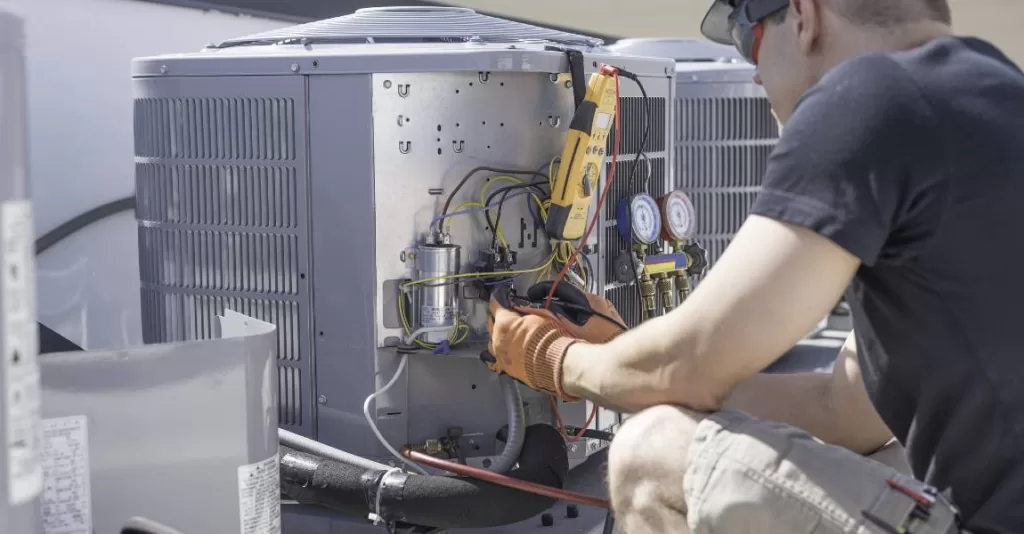
Schedule Annual Maintenance for your HVAC System
Annual maintenance for your HVAC system is crucial to ensure it runs efficiently and effectively throughout the year. Neglecting to schedule regular maintenance can lead to costly repairs, reduced energy efficiency, and even a shortened lifespan for your HVAC system.
Here are some services that are typically required during an annual maintenance appointment:
1. Cleaning or replacing air filters: Dirty air filters can cause your HVAC system to work harder, leading to increased energy consumption and reduced air quality. During an annual maintenance appointment, your technician will clean or replace air filters to improve airflow and maintain healthy indoor air quality.
2. Lubricating moving parts: HVAC systems have many moving parts that can wear down over time. By lubricating these parts, your technician can reduce friction and prevent damage, which can extend the lifespan of your system.
3. Checking thermostat settings: Your thermostat plays a critical role in controlling the temperature and humidity levels in your home. During an annual maintenance appointment, your technician will check your thermostat settings to ensure they are accurate and calibrated correctly.
4. Inspecting electrical connections: Faulty electrical connections can cause your system to malfunction or even pose a fire hazard. Your technician will inspect all electrical connections and tighten any loose wires to prevent potential problems.
5. Cleaning coils and drains: Dirt and debris can accumulate on your HVAC system’s coils and drains, reducing its efficiency and potentially causing water damage. Your technician will clean these components to prevent blockages and ensure proper drainage.
6. Checking refrigerant levels: Low refrigerant levels can cause your system to work harder and may lead to costly repairs. Your technician will check your refrigerant levels and add more if necessary.
By scheduling annual maintenance for your HVAC system, you can ensure that it operates efficiently and effectively throughout the year, saving you money on energy bills and avoiding costly repairs. Contact a licensed HVAC technician to schedule your next maintenance appointment today.
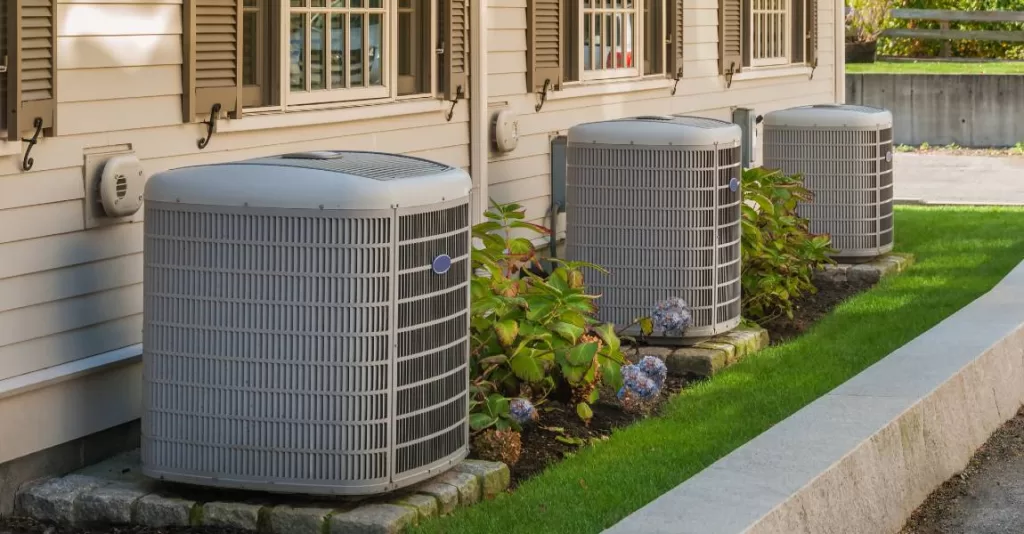
Consider Replacing your Outdated AC Unit
If you’ve been struggling with high energy bills despite trying to conserve energy, your outdated AC unit may be the culprit. Replacing your AC unit with a newer, more energy-efficient model can help you save on energy costs in several ways.
Energy Star estimates that replacing an old, inefficient HVAC system with a new Energy Star-certified model can save homeowners up to 20% on their heating and cooling costs.
Replacing Unit Will Help With the Following:
1. Lower Energy Consumption: Older AC units tend to consume more energy than newer models due to their outdated technology. According to the U.S. Department of Energy, replacing your old AC unit with a more efficient one can cut your cooling costs by up to 20%.
2. Improved Efficiency: Newer AC units are designed to be more efficient, which can cool your home using less energy than older models. This translates to lower energy bills and less strain on your wallet.
3. Reduced Maintenance Costs: Older AC units tend to require more frequent maintenance, which can add up to significant costs over time. On the other hand, a new AC unit requires less maintenance, which means you’ll save money on repairs and upkeep.
4. Rebates and Tax Credits: Many states offer rebates and tax credits to homeowners who replace their old AC units with more efficient models. These incentives can help offset the cost of purchasing a new AC unit, making upgrading more affordable.
5. Increased Home Value: Upgrading your AC unit can also increase the value of your home, making it more attractive to potential buyers if you decide to sell in the future.
Statistics show that replacing an outdated AC unit can save you significant amounts of money on energy costs. According to the Department of Energy, the average household spends around $875 per year on cooling costs, but upgrading to a more efficient AC unit can cut that cost by up to 20%. Additionally, studies show that homeowners who replace their old AC units can save up to $2,000 over the lifetime of their new unit.
Conclusion
In conclusion, there are various ways to save money on your HVAC energy bills. Simple steps like regular maintenance, sealing air leaks, and installing a programmable thermostat can significantly reduce your energy consumption.
Additionally, upgrading to more energy-efficient models and considering alternative heating and cooling options can help you save money in the long run.
By implementing these strategies, you can reduce your energy bills and contribute to a more sustainable and eco-friendly environment.
Need help installing, repairing, or maintaining your HVAC unit? Contact us today and we’ll get started on your HVAC system.


